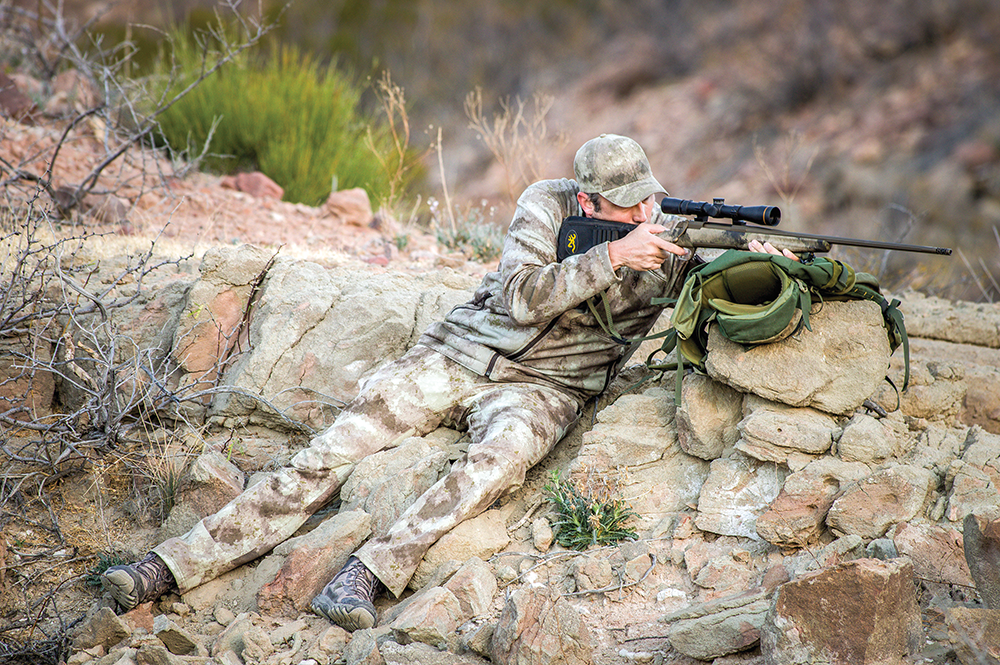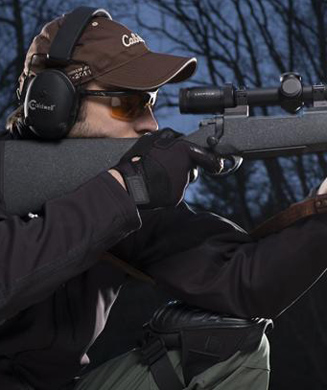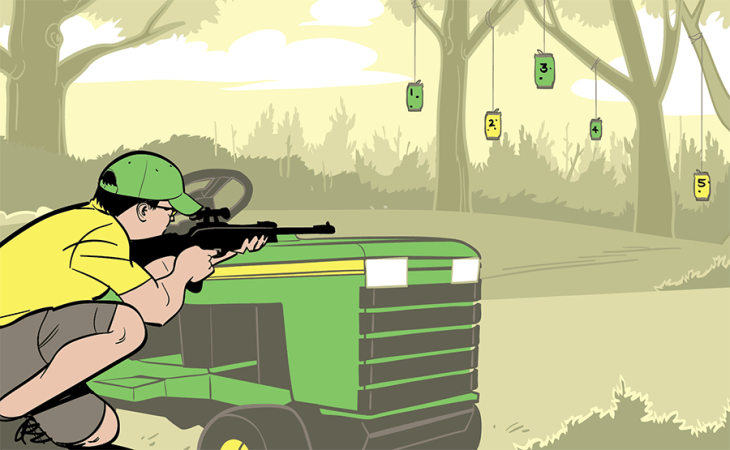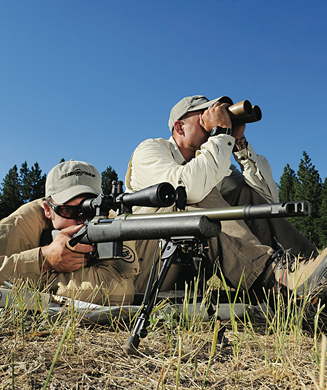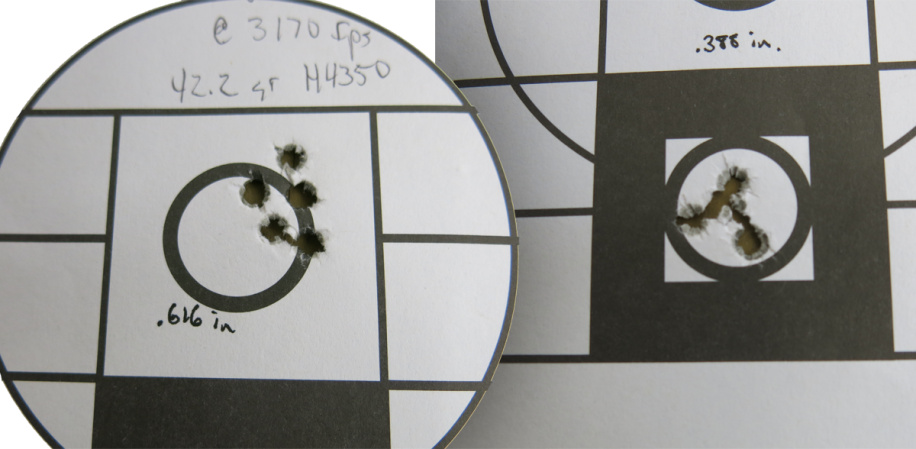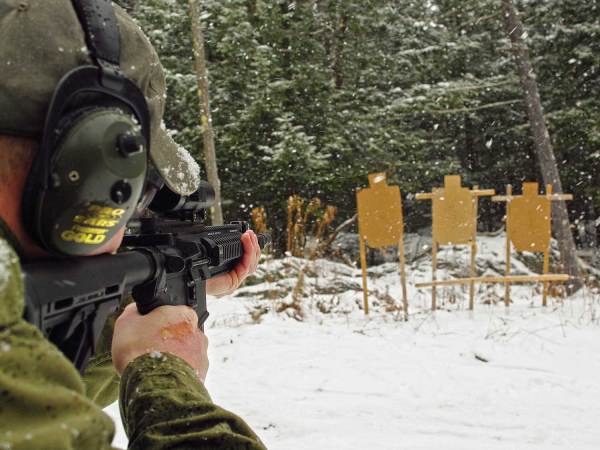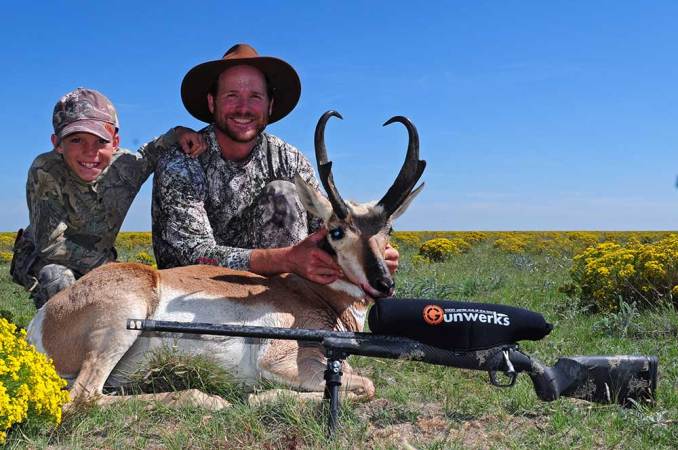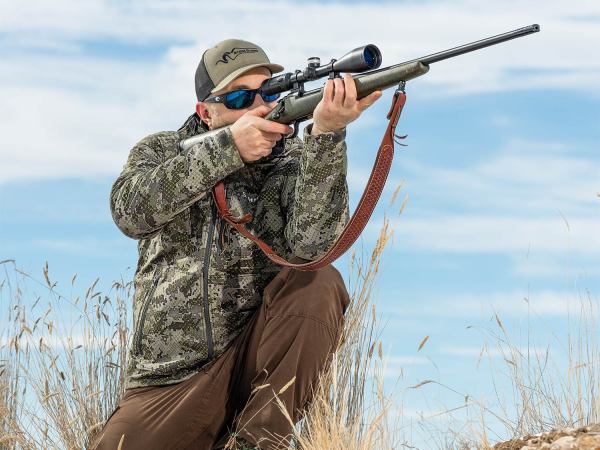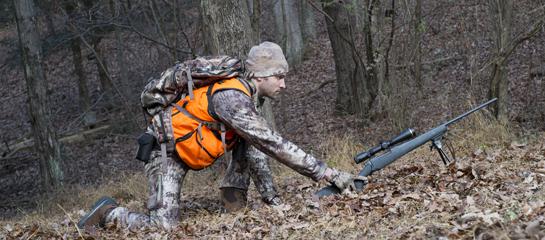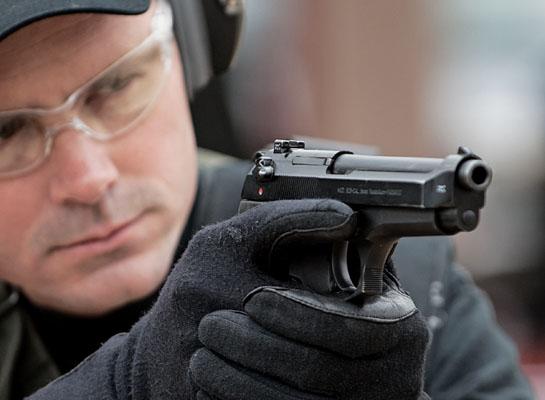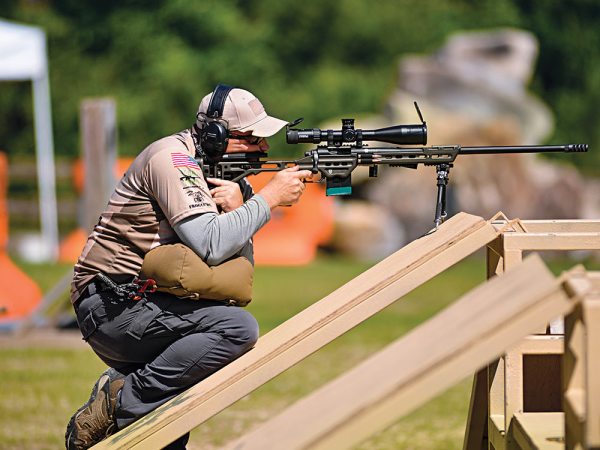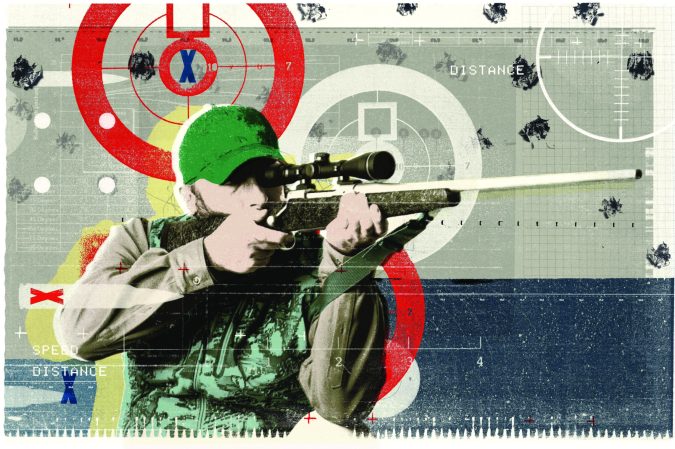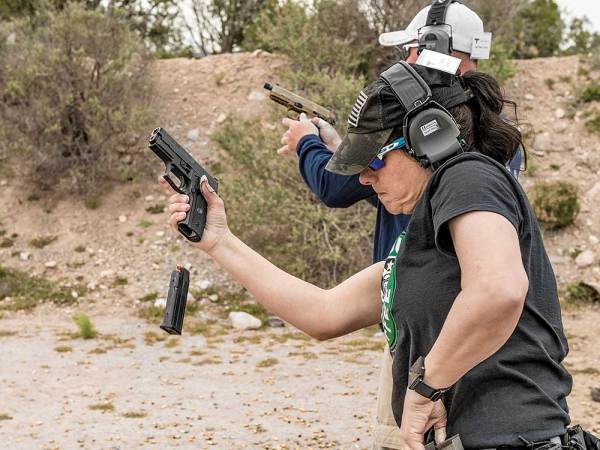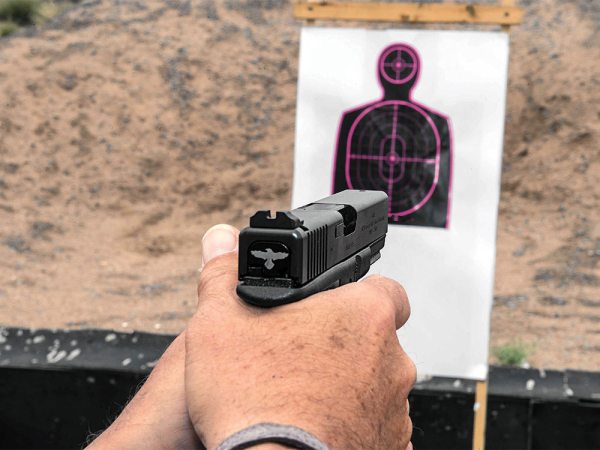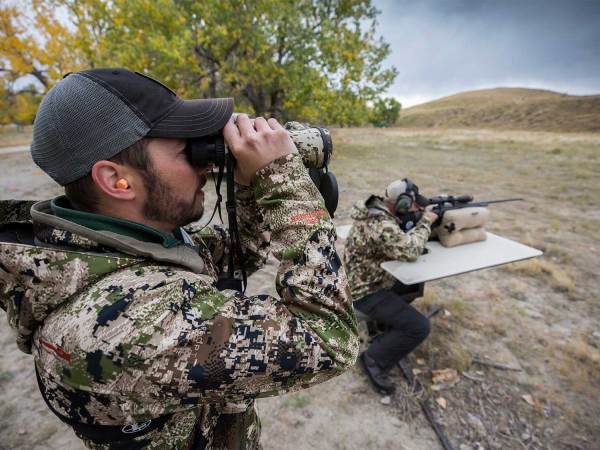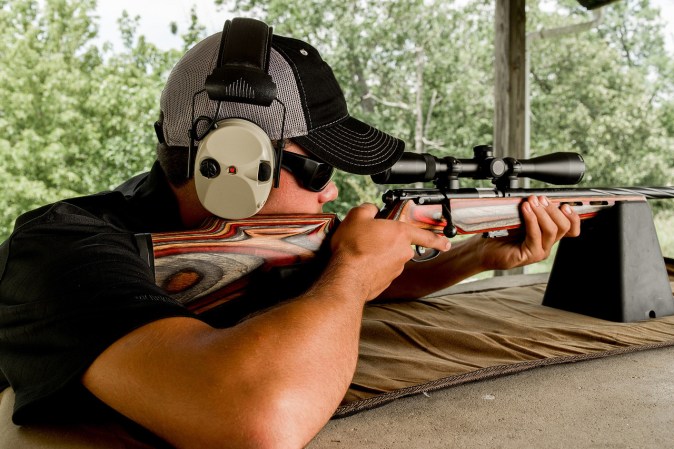We may earn revenue from the products available on this page and participate in affiliate programs. Learn More ›
We sat in the ditch, watching the 160-class buck bound away. He gave one last flick of his tail before disappearing over the ridge. My guide clapped me on the shoulder and said something encouraging, but I could tell he was as disappointed as I was.
I’d just had a mature whitetail in my scope at 150 yards—a chip shot in Wyoming—and couldn’t bring myself to pull the trigger. The flimsy shooting sticks might as well have been car antennas in the face of my buck fever. At one point my buddy even dropped in front of me so I might use his shoulder as a rest—but that setup didn’t exactly calm my nerves. I wasn’t comfortable, and I didn’t take the shot. So I missed that opportunity, and another the next day, when I unwisely settled my rifle on barbed wire.
Given that all my successful deer hunts so far had taken place in a treestand, those missed opportunities weren’t especially surprising. But I was determined not to let another open-country buck get the best of me, so I spent the following summer running these drills.
The Gear
Use the scoped rifle you plan to hunt with. An attached bipod is an optional but smart addition. Grab any items you’ll have on your person: a pack, shooting sticks, etc. Bring a buddy, and equip him or her with a stopwatch, rangefinder, and binocular or spotting scope.
The Setup
Run each drill with an 8-inch target at 200 yards. If you’re worried about burning ammo, begin by dry-firing and switch to live rounds once you’re comfortable with each scenario. Start by taking as long as you need to execute these.
As you become more proficient, extend your range and reduce the allotted times. “Graduate” from each drill by placing all your shots on the target.
THE DRILLS:
Drop and Give Me 3
Time: 90 seconds for 3 shots
Objective: Replicate some of the physical exertion of a stalk, and use “found” items to stabilize your shot.
Execution: Shoulder your pack and start from a standing position with your rifle in hand. When the clock starts, swing your pack onto the ground, drop onto it in the prone position, fire one shot. Gather your pack and rifle and repeat the cycle until you’ve fired a total of three shots
Bonus challenge: Shoot without the pack or other rest. Use your body to create additional support—I rest the rifle’s forend on my forearm.
Post Up
Time: 20 seconds for 3 shots
Objective: Introduce a more structured aid, like a fence post or shooting sticks. Execution: Start from a standing position, with your rifle slung over your shoulder. Remove it, get into position on the nearest post, stump, or sticks. Fire three shots in a row while in that position, focusing on quick target acquisition for each follow-up shot.
Bonus challenge: Instead of resting your gun on top of a post, use the side of the structure. I grip the post with my off hand, then lay the gun’s forend across my hand.
Take a Knee
Time: 20 seconds for 3 shots
Objective: This is bare-bones shooting. No pack, no sticks—just you, your rifle, and your target. Familiarity with this exercise will come in handy when the brush is too thick or grass is too high for prone shooting.
Execution: When the timer starts, drop one knee to the ground (the side opposite your trigger hand) and use the other as a rest. Squeeze off three shots in quick succession. Wrap your sling around your elbow for added stability.
Bonus challenge: Stay on your feet and shoot offhand.
Grab Bag
Time: 25 seconds per single shot
Objective: This is your final exam. You should be shooting with 100 percent accuracy to replicate the one-shot, one-kill objective.
Execution: Find a place where you can safely shoot out to 500 yards, then go on a walkabout with your buddy and ask him to call out targets between 50 and 300 yards. Once you agree upon the target, get into position and shoot. Any gear or natural shooting aid is fair game. Bonus challenge: Your buddy doesn’t announce the yardage. Figure it out yourself on the fly.

